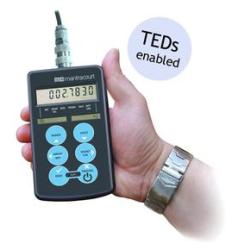The PSD portable strain gauge cum load cell indicator, which was introduced by Mantracourt in 2003, has proved to be very useful in numerous industrial applications. The handheld display has been assisting engineers and technicians in their work.
The device is capable of auto calibration and is housed in a waterproof case. Equipped with a long-lasting battery and an additional handheld for RS232 output, the sensor is suitable for industrial applications that require data accuracy and reliability.
 PSD Strain Gauge Indicator
PSD Strain Gauge Indicator
Kelly Voysey, Mantracourt’s Marketing Manager, claims that the PSD is capable of collection as well as analysis of data. He added that the PSD has been in the market since 2003 and thousands have been sold worldwide since then. The PSDs have been widely used for monitoring load on guide wires that are used in radio mast stability maintenance. Load shackles with integrated TEDS are responsible for maintaining the calibration details. Connection between the shackles and the PSD can be established by a mating connector and a five-pin binder socket. The value of the load can then be read using the peak/valley or gross/net functions on the keyboard. The inclusion of TEDS enables the PSD to read from many TEDS enabled strain bridge sensors, which ultimately eliminates the need for calibration by the operator.
Use of TEDS further avoids the mix-up in recording the data. For recording the data, one simply needs to connect and switch on the PSD. The PSD232 can be used to establish connection with a PC or a data logger to relay the data in ASCII format at 9600 baud. The device is extremely lightweight and weighs just 250 g.